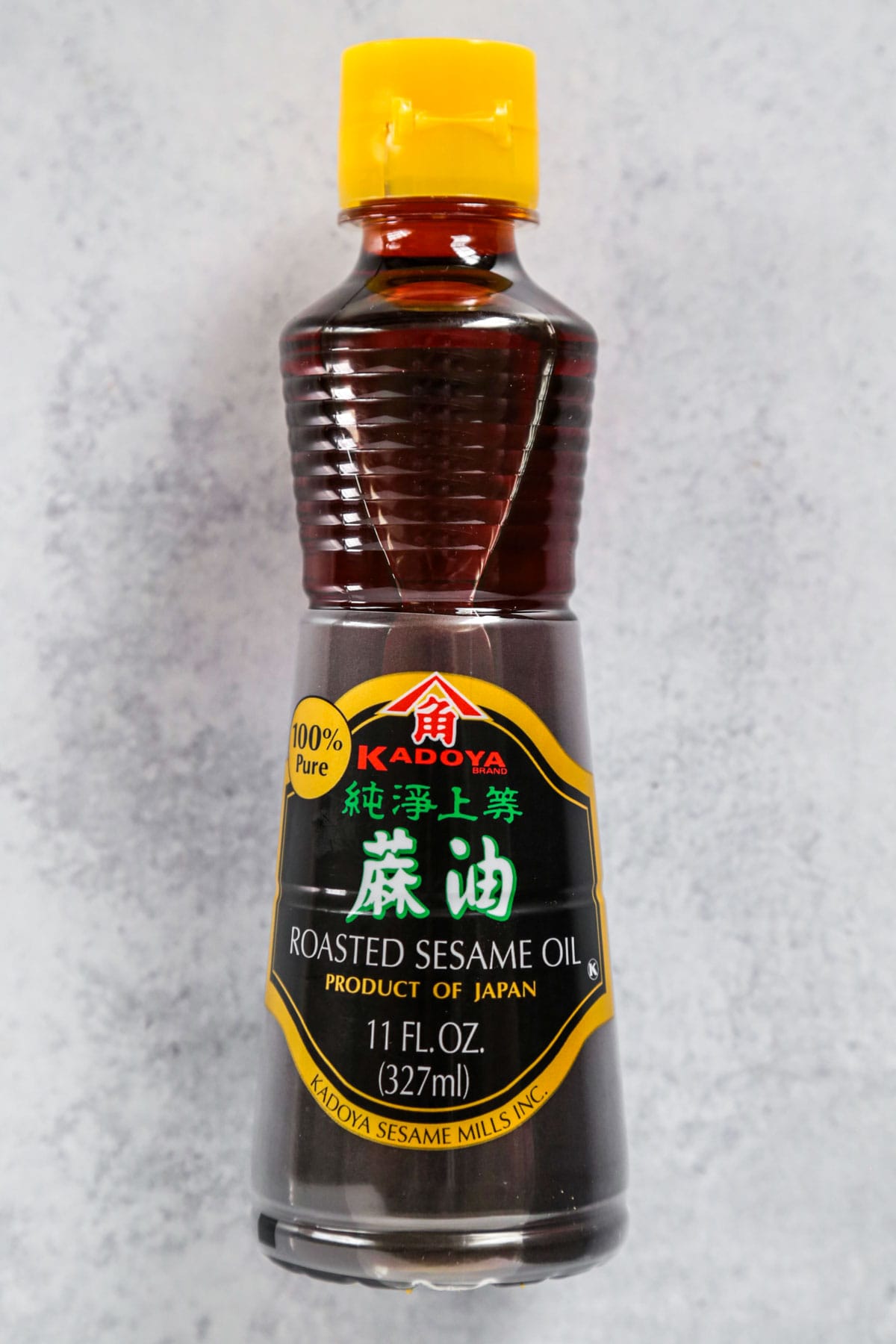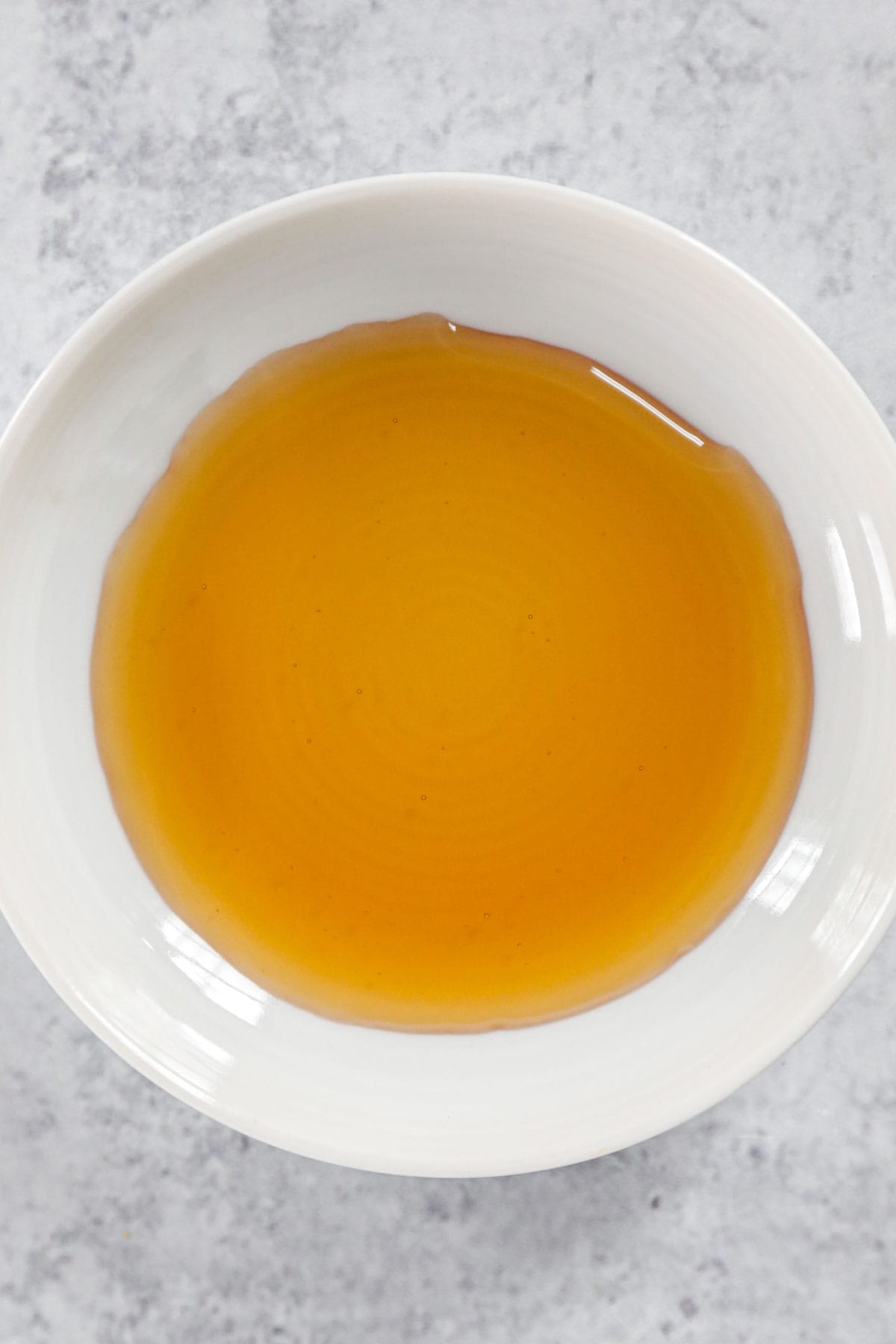
Table of contents
What is Sesame Oil?
Sesame oil is a neutral tasting oil that is made from raw, untoasted sesame seeds. It’s a great oil for cooking since it can withstand very high heat. The oil is used as both a cooking ingredient and a finishing component on many dishes. Today we will look at two specific sesame oils: regular and toasted sesame oil.
What’s most important to know about the two oils is they are not interchangeable with one another. The two flavors are very distinguishable and won’t substitute for a 1-to-1 flavor.
Toasted sesame oil is made from toasted sesame seeds. When the seeds are toasted, they develop a nutty, rich, and earthy flavor profile that’s much more concentrated than regular sesame oil. Because of its low smoke point, it’s used at the end of the cooking process, as finishing oil. Regular sesame oil, on the other hand, has a high smoke point and is used during the cooking process.
The oils also look very different when it comes to appearance – regular sesame oil is light in color while toasted sesame oil has a very dark brown color.

How To Use Sesame Oil
Using regular sesame oil isn’t all that different from using vegetable or canola oil. It can be used to roast, pan fry, deep fry, and sauté.
Toasted sesame oil is most often used as a flavored oil to finish off a dish. It’s also used in salad dressings, marinades, and sauces.
Both oil are essential ingredients to have in your pantry if you cook a lot of Asian dishes.
Here are a few recipes that show how to use them:
- Japanese sesame dressing
- Bibimbap Sauce
- Stir fried napa cabbage
- Cold sesame noodles
- Edamame with Soy and Sesame Sauce
Where To Buy It
Sesame oil is pretty easy to come by in most supermarkets. Look for the oil in the Asian section of your grocery store. Local Asian markets will typically have a good variety of different-sized containers, and more options for toasted or roasted sesame oil.
Since it can fall on the pricier side, it might be beneficial to buy it in bulk if you plan on using it frequently. The larger containers can be stored just like the smaller ones, in a dark, cool place.
If you cannot find it in your area, here are two options that I always use and that are available for purchase on Amazon:
How To Store Sesame Oil
When stored correctly, sesame oil can last for about 1 year. Regular sesame oil can be kept at room temperature in the container that it comes in. Toasted sesame oil, on the other hand, has a shorter shelf life when stored at room temperature. Because of this it’s better to keep it in the refrigerator or somewhere cool and dark, to extend its use.

Substitutes
While the taste of the oil will not be exact, it will be good enough to get the job done. When looking for replacements for regular sesame oil, check out neutral oils like canola, olive, sunflower, or coconut oil. Most neutral oils will work well in its place.
When it comes to looking for a substitute for toasted sesame oil, it gets a little more complicated. Since you are trying to mimic the nutty, toasty flavor, it is best to seek out oils that have similar qualities. Oils like peanut, walnut, or avocado, are somewhat similar to the taste of toasted sesame oil. Other options are to add some ground sesame seeds or a little tahini to your dish.
Frequently Asked Questions
Yes, since it’s made from sesame seeds, which are 100 percent gluten-free. As long as nothing else is added to the oil, the oil is gluten-free.
It is not necessary to refrigerate sesame oil. However, if you want to increase the shelf life of the oil, keeping it in the fridge will do the trick. It may start to get cloudy, but it is still fine to use.
When looking to buy sesame oil, look for unrefined oil that has a clear color and transparency, is naturally toasted at low temperatures, and is finely pressed. These small details will make all the difference once you taste your dish.















Does sesame oil have a lot of salt?
Hi Marlene! Sesame oil doesn’t have any salt, it’s very nutty like sesame seeds. 🙂